Andrew Birkin picks five of the best from his new photo book and reveals the celebrated couple “never really split-up”
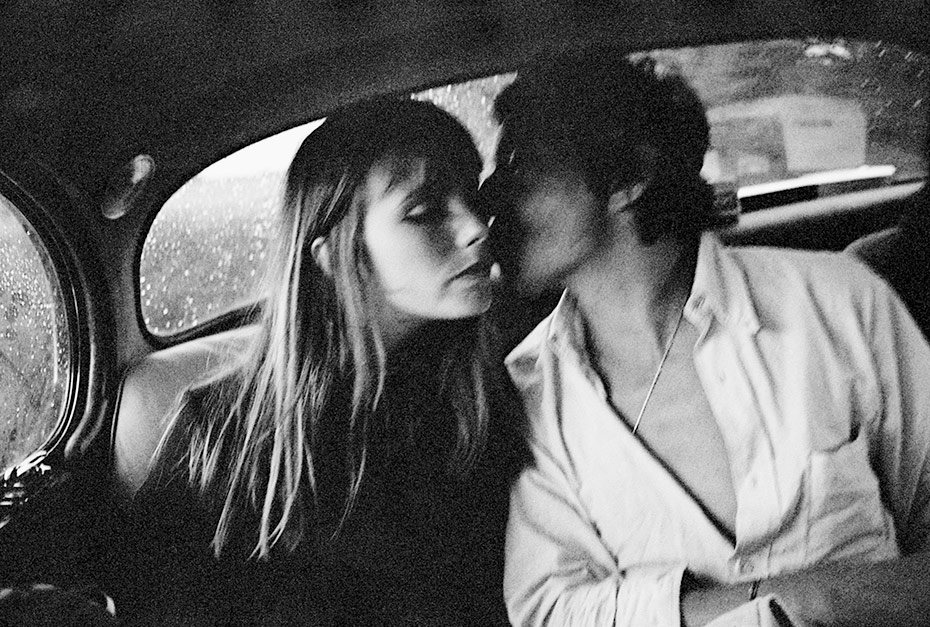
“In the twenty years or so since he died no-one’s really replaced him, in the public eye as well as in Jane’s life, and to a lesser extent I suppose, in mine”. Writer/director Andrew Birkin adored Serge Gainsbourg, as did of course his actress sister Jane. He was working as a location scout on Stanley Kubrick’s doomed epic Napoleon when the channel-hopping couple began their 12-year romance – the ‘ravaging of the rose’ as some referred to it – in 1968. The timing was fortuitous. “I’d taken all these pictures for Kubrick, about 15,000 of them, but they were all static still-lives of rooms and palaces around Europe, without any people in them. I compensated in my spare time by taking pictures of Jane and Serge. They were the most photogenic people I knew, I just loved taking pictures of them”.
These photographs remained largely unpublished until now. The couple officially separated in 1980, hastened by Gainsbourg’s terminal decline into alcoholism – Andrew’s relationship with the man he proudly likens to a French “John Lennon” naturally tethered off too – though this was a separation defined purely by a lack of carnal intimacy, despite new partners. “They never really split-up, that’s what’s so odd retrospectively”, says Andrew. “He went on writing songs for Jane – some of his finest in my opinion – almost until he died (in 1991). The only real difference was that they no longer slept together”.
Jane and Serge: A Family Album is just that: a set of intimate, candid, sometimes goofy snapshots of holidays, births, marriages and long-departed family pets, with added glamour – you won’t find any blurry portraits of disgruntled elderly relatives eating cold chips on windy piers: that doesn’t happen in St Tropez.
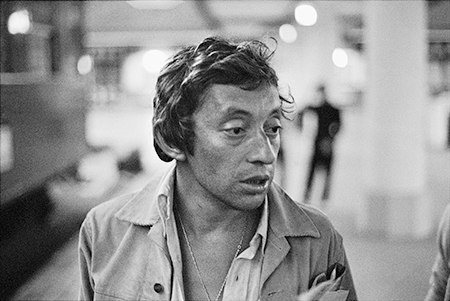
“This is Serge kissing Jane goodbye in the back of the taxi that was taking he and I to the station in Nice, to catch the night train back to Paris equipped with some rather fine wine as I recall. I love it because you get the profile of his wonderful nose. Jane’s film La Piscine was showing at Cannes – she had to stay down there. She looks slightly standoffish, even cross, but I think she was just sad because he was going back to Paris and jealous of me because I was going to be spending the night with him in one of those sleeper-cars”.
“This is at the train station (in Nice). What I love about it is it shows his deep Russian/Jewish melancholy, which wasn’t always apparent. That melancholy look is not unconnected to the fact that he spent his childhood in Paris with a yellow star on him, evading Nazis. Serge got stricken with angst; it was just something that surfaced from the deep wells of his subconscious. He was very much someone who lived in the moment; he wasn’t too keen on looking back. The impression I got then and certainly subsequently is that he really found happiness with Jane, in that pure sense of ‘living in the moment’ happy”.
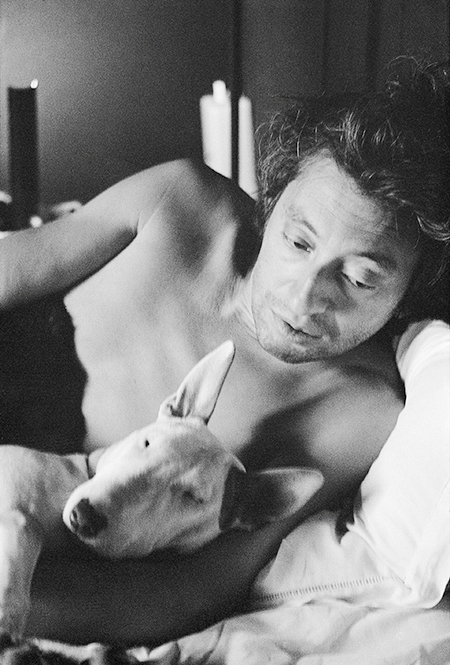
“Ah yes, in bed with his mistress! He loved Nana, as we all did. Jane got her in Yorkshire. John Barry, her former husband, was a Yorkshireman – very talented but slightly dour and rather humourless. Serge was the total opposite: he had a very boyish sense of humour. Nana met an early death because she was addicted to sugared almonds. Serge used to have a great glass jar full of them next to his piano and if Nana came into the room he’d take a handful and throw them across the floor. Nana would bound after them and then hit the brakes and skid for miles, then spend the next ten minutes munching on the sugared almonds which I don’t think were very good for her liver, anymore than alcohol was good for Serge’s”.
“Hobnobbing with a Nazi! They’d been asked to do a Second World War movie in Yugoslavia (Le Traître) and this was just a moment between takes when Jane and Serge were chatting to this actor. This was very shortly before I started working on a project with a real Nazi called Albert Speer, who’d been Hitler’s Armaments Minister and architect. I spent eight or nine months with him in Heidelberg. I used to come back to London via Paris and I’d been rather floored by Speer asking for Jane and Serge’s autograph. I wondered how Serge would react. In the event he was more than happy to oblige an old Nazi. He probably wrote something like ‘up yours’ in French, knowing that Speer probably wouldn’t understand it.”
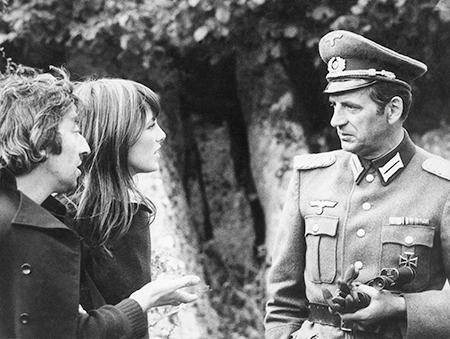
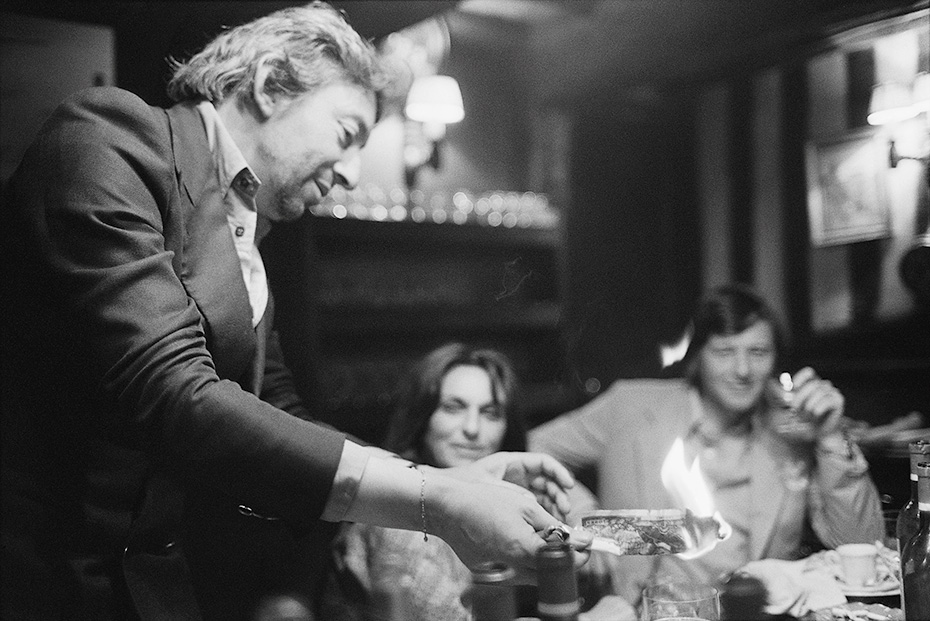
“The first time he did it was in Yugoslavia, at the local pub in this tiny village. Fuelled by vodka, he let rip about his feelings about communism and Yugoslavia by burning currency. It caused quite an incident. Thereafter it became a bit of a party trick. He loved doing it because of the look of intense horror on people’s faces. As a child, when he wore the yellow star, he took great pleasure in flashing it in front of the bourgeoisie, for the same reason. It was almost sado-masochistic. About six months after he and Jane had split-up he came round to where I was living in London with his new girlfriend, who was throwing up in the lavatory due to taking too much heroin. I remember Serge was slightly proud of that, which was odd because he didn’t touch drugs. It was that element of danger; he loved danger”.
Photography Andrew Birkin




